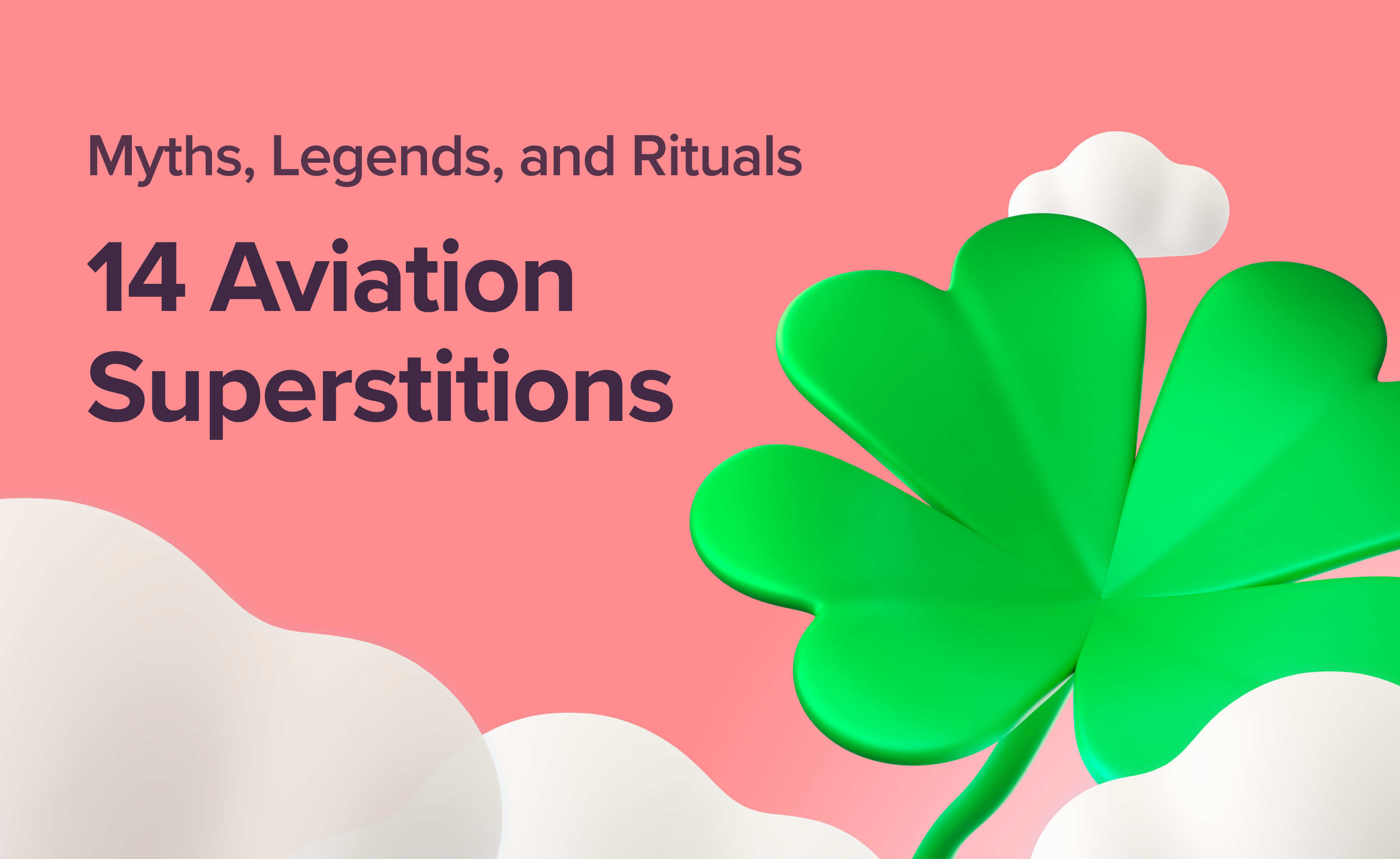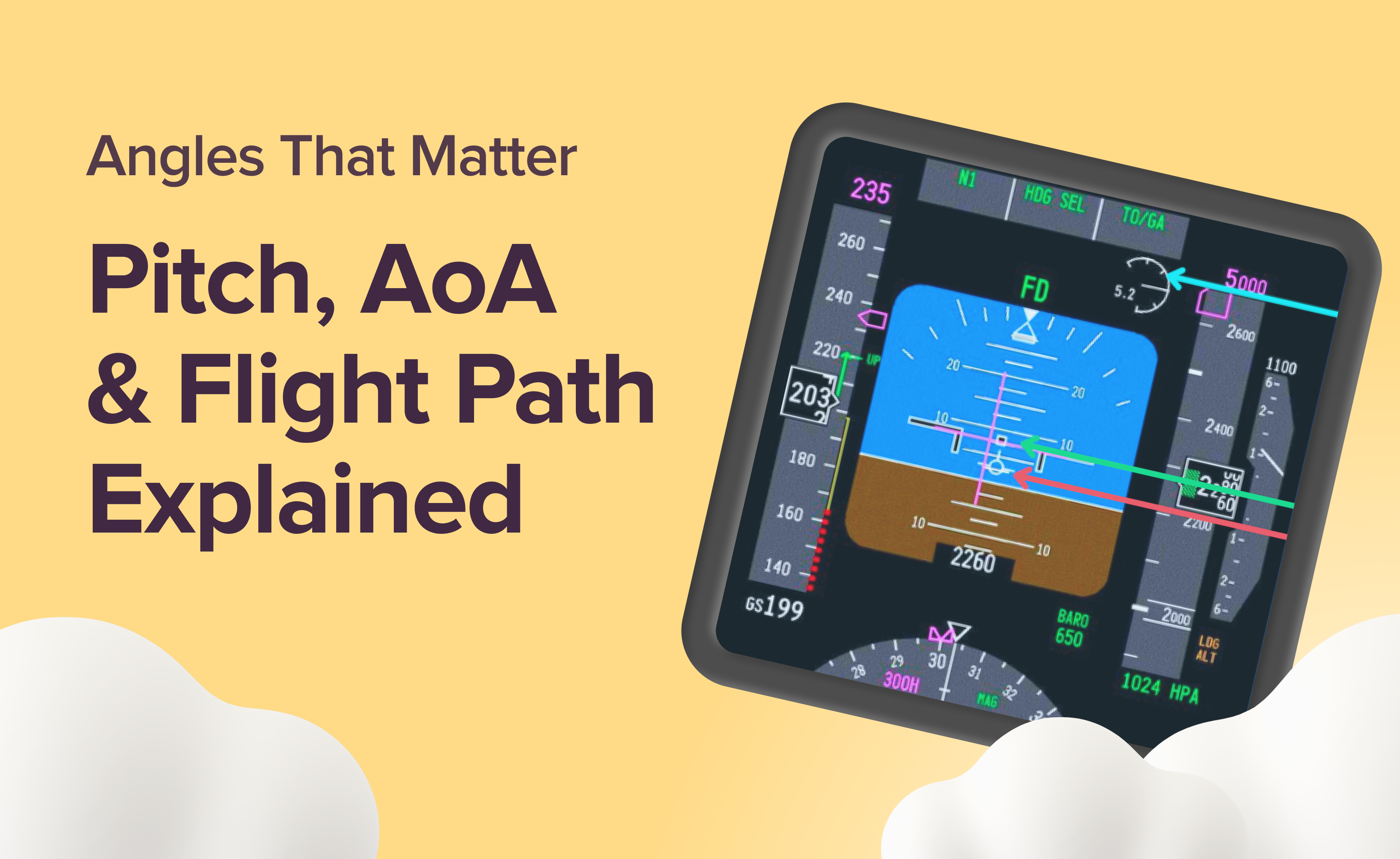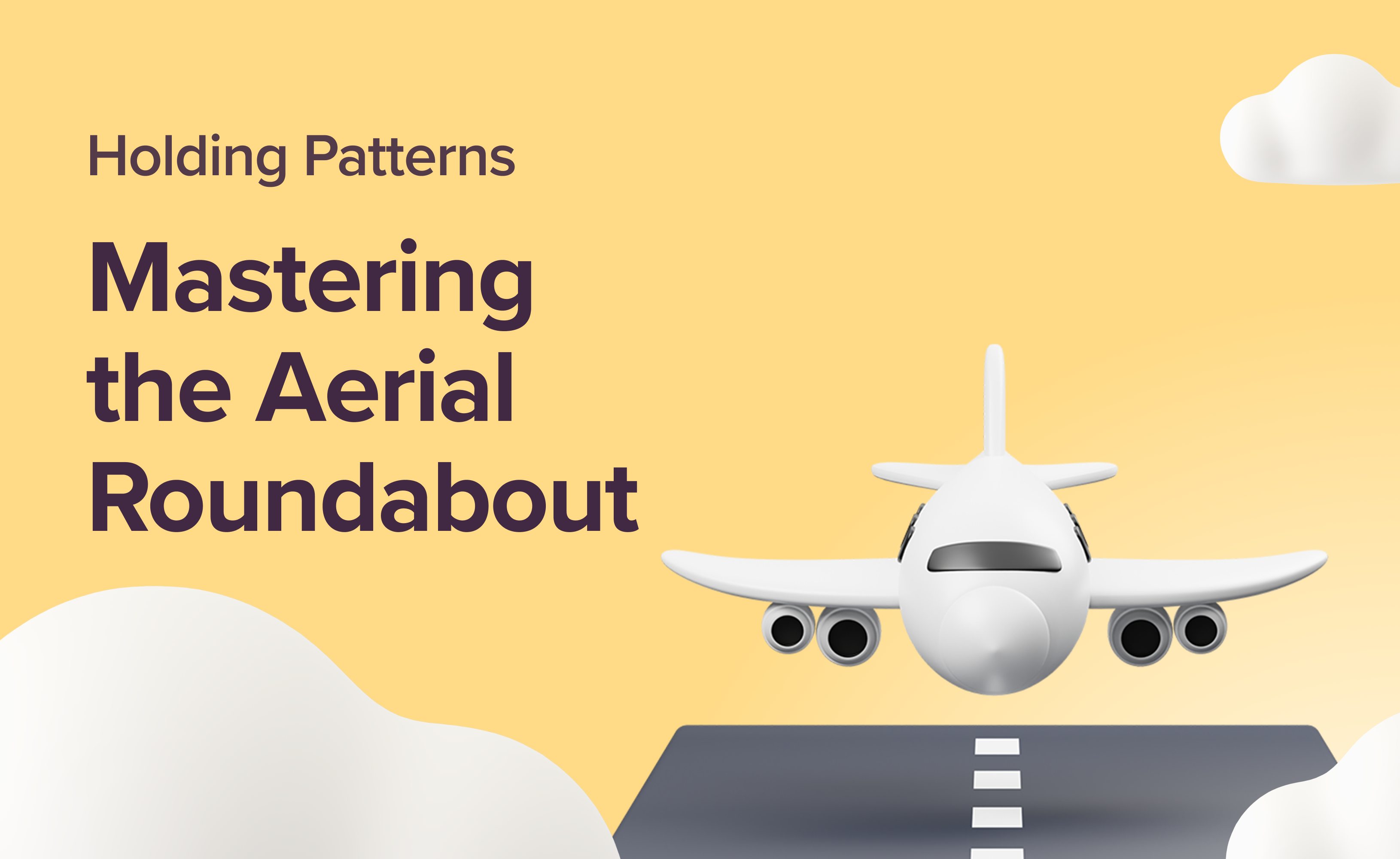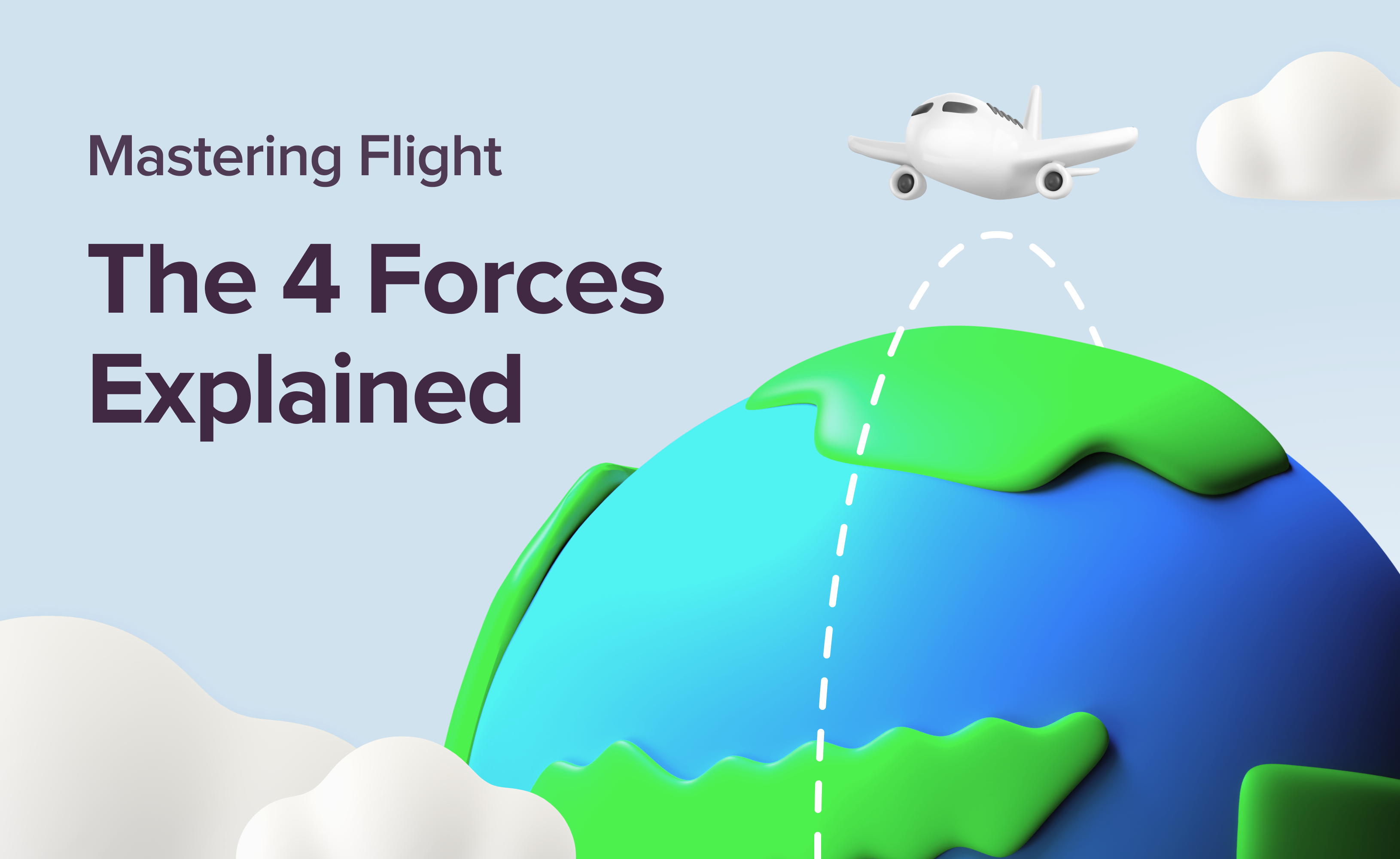Myths, Legends, and Rituals: 14 Aviation Superstitions

Aviation has always carried an air of mystery and adventure. From the earliest days of flight to the cutting-edge jets of today, pilots and crew members have developed a unique blend of superstition, ritual, and tradition. Whether it’s avoiding certain flight numbers or carrying lucky charms, aviation superstitions are alive and well, reminding us that even in an industry driven by precision and science, there’s always room for a little belief in the unknown.
1. Beware of Number 13 and Black Cat

Let’s start with one of the most well-known superstitions — Friday the 13th. Many people believe this day is cursed with bad luck, and this belief extends into the world of aviation. Historically, airlines have noticed that fewer passengers book flights on this day. Data suggests that flights from the UK to Europe are around 39 per cent cheaper on Friday the 13th, as travellers worry about something going wrong on this notoriously unlucky day.
Interestingly, some airlines, including Air France, KLM, Iberia, and Ryanair, have skipped row 13 in their seating arrangements, catering to passengers’ superstitions about the unlucky number. Some airlines even avoid scheduling flight 666, especially on routes to destinations like HEL (Helsinki), playing into the idea that the combination of these symbols could spell disaster. Although pilots are known for their rational, cool-headed approach to flying, even they might have reservations about operating flights on this infamous day. And while aviation safety statistics show no correlation between accidents and the date, there’s no harm in being a little cautious — right?
It’s not just the number 13 that gets a bad rap. Another long-standing symbol of bad luck is the black cat. In earlier times, black cats were believed to bring misfortune, and they were avoided at all costs. There’s even a story of a crewman who walked half a mile through a field to dodge an ebony feline crossing his path!
Take a journey through the unbelievable world of aviation. Read Beyond Belief: 8 True Aviation Tales.
2. A Pilot’s Pre-flight Rituals

Pilots are creatures of habit, and some pre-flight rituals have been passed down through generations, creating a fascinating blend of superstition and routine. One such unique tradition is knocking on the fuselage of the aircraft before boarding. While this isn’t an official safety measure, many see it as a symbolic gesture — perhaps wishing the plane good luck or “making friends” with it before the journey.
During World War II, the extreme stress faced by military pilots led to even more unusual habits. In his book Flying Against Fate, author S.P. Mackenzie describes some of the more eccentric pre-flight rituals. It involved dancing on the wing of the aircraft with an open umbrella for several minutes before entering the fuselage of a heavy bomber. While it may sound bizarre, these superstitions offered pilots a sense of control before embarking on dangerous missions.
Today, while dancing on wings may not be common, other pre-flight rituals persist. Some pilots develop habits, like kicking a particular tyre during the walk-round, spitting on the tail fin, or placing chewing gum on the wing for good luck. It's a small, simple act, but it’s a comforting ritual for many pilots that helps them start each flight on the right note.
Ever wondered what it's really like to work in the airline industry? Discover first-hand accounts from flight insiders.
3. Naming Aircraft
Naming aircraft has long been a tradition in aviation, similar to the way sailors name ships. Many airlines, especially in the past, believed that naming their planes brought good luck. Virgin Atlantic has famously embraced this tradition, with fun and cheeky names like “Lady Penelope” or “Vera” adorning their fleet. These names typically add character to the aircraft and create a sense of pride and connection among the crew who operate them.
Military pilots have also been known to name their planes, believing it brings luck on missions and fosters a personal bond between the pilot and their aircraft.
Want to see some seriously cool planes? Look at these 20+ stunning airline liveries.
4. The Seatbelt Tug and Harness Tapping

In modern aviation, safety protocols rely on technology and strict checklists, but many pilots still maintain personal rituals that blend superstition with routine. One such habit is the seatbelt tug or harness tapping just before take-off or landing. It is a simple yet powerful gesture that helps pilots mentally centre themselves before the critical phases of flight.
Pilots often give their seatbelts a final tug or tap their harness after completing formal checklists, as though it adds an extra layer of reassurance. This small act creates a sense of readiness, helping them focus on the task ahead.
It reflects the human need for comfort in habits, even in high-tech environments. This grounding ritual, blending superstition with safety practices, ensures pilots feel fully prepared before taking to the skies.
Are you ready to dive into the world of aviation mysteries? Explore the most popular conspiracy theories in our blog, Sky High Conspiracies.
5. Lucky Charms in the Cockpit
Just like any profession, pilots sometimes rely on lucky charms to boost their confidence before a flight. From coins and lucky pens to trinkets passed down by mentors, the cockpit can be a treasure trove of personal mementoes. Some pilots might slip a small charm into their flight bag, while others keep one in the cockpit, a subtle reminder of past success and smooth flights.
One famous example? Legendary aviator Charles Lindbergh was known to carry a small lucky rabbit’s foot during his historic solo flight across the Atlantic. And while the rabbit’s foot may have faded from popularity, today’s pilots still find comfort in their good-luck objects.
Discover the groundbreaking story of The First Non-Stop Transatlantic Flight in our latest blog.
6. Weather Superstitions

Weather is one of the few elements in aviation that even the most skilled pilots can’t control. It’s no surprise that weather superstitions have found their place in the cockpit.
In flying communities, pilots often joke about “angering the weather gods” when unexpected storms or turbulence appear. In these situations, some pilots may mutter light-hearted comments or offer a silent apology to the skies, as though they believe a small act of humility might ward off poor weather. While they’re well aware that meteorology, not mysticism, drives weather patterns, these rituals offer comfort and humour in an unpredictable environment.
One quirky superstition involves the belief that pointing up at the sky may tempt fate and bring about bad weather. Many pilots take this seriously enough that, when complimenting the day’s weather, they make sure to address only the sun and avoid mentioning the weather directly. The idea is that drawing too much attention to good conditions might lead to them suddenly deteriorating. This belief has been passed down through generations of flyers and continues to be a part of pre-flight banter in many flying communities.
Perhaps one of the oldest and more humorous superstitions comes from older generations of pilots, who believe that washing your aircraft will inevitably lead to bad weather. Similar to how washing your car might “guarantee” rain.
7. The “No Whistling in the Cockpit” Tradition
Another odd superstition revolves around the act of whistling. In some aviation circles, there’s a long-standing belief that whistling in the cockpit brings bad luck. This superstition likely stems from old sailing traditions, where whistling was thought to “whistle up a storm.” Pilots, especially those with backgrounds in maritime aviation or who have crossed over from the nautical world, may jokingly ban whistling in the cockpit to avoid tempting fate.
This tradition adds a bit of light-hearted fun to pre-flight rituals, with some pilots reminding their crew that “no whistling” is allowed until they land!
Avoid common flight mistakes and ensure a safe journey. Read Safe Flying: 11 Mistakes to Steer Clear Of.
8. No Bananas on Board!

Believe it or not, bananas are considered bad luck on certain flights, particularly in maritime aviation or seaplane operations. This odd superstition traces its origins back to early shipping lore, where bananas were thought to spoil easily and bring bad luck to ships. Sailors believed that the presence of bananas on board could doom a voyage, either by inviting accidents or even causing sickness among the crew. This belief eventually crossed over into aviation, especially among pilots who operate seaplanes or maritime-based aircraft.
Though there’s no scientific basis for this fear, the superstition persists, particularly in smaller aviation communities. You may still hear seaplane pilots light-heartedly refuse to bring bananas on board, citing the age-old belief that they could bring misfortune.
9. "Never Say Last Flight" Legend
In the world of aviation, it’s widely believed that calling the final flight of the day the "last flight" is tempting fate. Instead, pilots and cabin crew typically refer to the last leg of the day as the "next flight" or "final sector," avoiding the word "last" altogether. The idea is that saying "last" somehow invites bad luck, as though by declaring the flight is final, something could go wrong.
This playful superstition leads to a bit of verbal tiptoeing among crews, who will jokingly dance around the term but still avoid using it directly. "Final sector" becomes the preferred phrase, with pilots and crew members in agreement that it’s better not to test fate — just in case.
10. Crossing the Equator Ceremony

The Crossing the Equator Ceremony is a well-known tradition among long-haul pilots and cabin crew. This ritual dates back to the early days of aviation, when crossing the equator was considered a major milestone, much like in the maritime world. Even today, this playful tradition endures. When a pilot or crew member crosses the equator for the first time, they are often initiated by their more experienced colleagues with a light-hearted ceremony.
These ceremonies can involve anything from being doused with water to receiving a special badge or certificate, marking the momentous occasion. Sometimes, crew members will have to wear quirky costumes or perform fun tasks to earn their "crossing honours." For frequent flyers, particularly those on international routes, crossing the equator may become routine, but for first-timers, it’s a charming rite of passage that adds a nod to aviation history. It’s a tradition that keeps the spirit of adventure alive, celebrating personal milestones in a way that’s fun and memorable.
11. The Logbook Ritual
For pilots, the logbook is much more than a simple record of flight hours—it's a personal diary of the skies, one they fiercely protect and cherish. Many pilots treat their logbooks with almost superstitious care, believing that a well-organised, meticulously detailed logbook can positively impact their career. The way it’s kept is seen as a reflection of their professionalism and skill.
On the flip side, losing a logbook is considered terrible luck in aviation. For a pilot, losing it not only means the loss of hard-earned progress but symbolises a break in the continuity of their career. Some pilots go to great lengths to make backup copies or store their logbooks in fireproof safes, knowing it hold the key to their aviation journey.
12. Coins Under the Runway

In various cultures, placing **coins under the runway** or tossing them into an aircraft engine for good luck has been a long-standing tradition. This superstition is especially common in **East Asia**, where travellers believe that offering coins to the gods of fortune can bless their journey and ensure a safe flight. Though dangerous and strongly discouraged by airlines, this practice is still seen by some as a way to attract good luck.
The tradition became so common in certain regions that airlines had to issue warnings. In 2017, a well-known incident in Shanghai occurred when a passenger threw coins into an engine, leading to a 5-hour delay as mechanics retrieved the coins to prevent damage.
While this may seem harmless to some, it's rooted in deep cultural beliefs. The persistence of this superstition shows that even in the highly technical world of aviation, cultural rituals continue to play a role, as passengers seek control in uncertain situations like air travel.
13. The "Greased Landing" Myth
A "greased landing" refers to a touchdown so smooth that passengers hardly feel the aircraft meeting the runway. It’s a point of pride for many pilots, and there’s an ongoing playful competition in aviation circles to achieve the smoothest landing possible. However, there’s a persistent myth that a greased landing is always the best, when in fact, there are times when a firmer landing is not only safer but necessary.
In conditions like crosswinds or wet runways, a firmer landing helps ensure better control of the aircraft and quicker contact with the runway surface, reducing the risk of skidding or losing stability. Despite this, pilots often compare landing techniques and celebrate the elusive greased landing as a mark of skill.
Discover the hidden dangers of human error in aviation. Explore the Dirty Dozen and learn how to mitigate them.
14. Flying Over the Rainbow for Good Luck

One of the more colourful and uplifting traditions in aviation is the belief that flying over a rainbow brings good luck. This tradition, though not as widespread as others, holds special meaning for some pilots and flight crews. The idea is that rainbows, being rare and beautiful natural phenomena, represent positive energy, and flying through or over one is seen as a sign of good fortune and an auspicious journey ahead.
Rainbows have long been symbols of hope, transformation, and new beginnings, and in aviation, they take on a similar meaning. Whether it's a brief moment of awe during a routine flight or an unexpected sighting on approach, pilots often consider spotting or flying through a rainbow as a good omen. Some pilots even jokingly say that flying through a rainbow guarantees a smooth landing or a problem-free flight.
Airhead's Takeaway

As you can see, aviation culture is not just shaped by technology and precision, but also by the human side of flying. It’s fascinating how pilots, who are trained in rigorous procedures and precision, still carry personal beliefs and rituals. These quirky habits and traditions offer pilots a way to connect with the unpredictable nature of flying, adding a layer of personal ritual to their professional expertise. And while superstitions may not keep the aircraft aloft, they certainly help keep spirits high.
















































